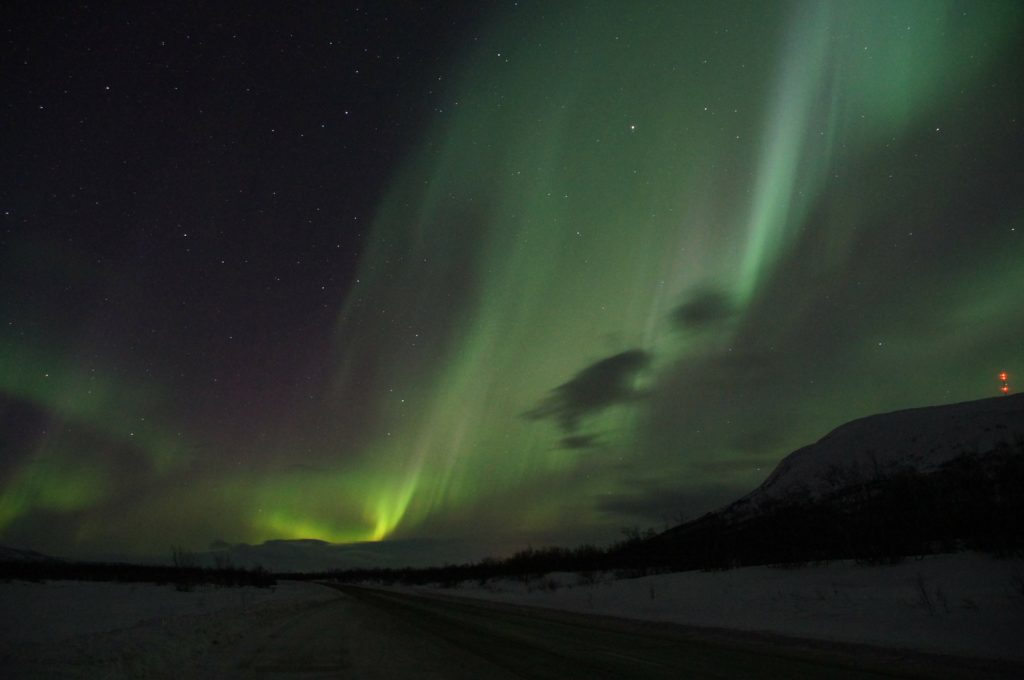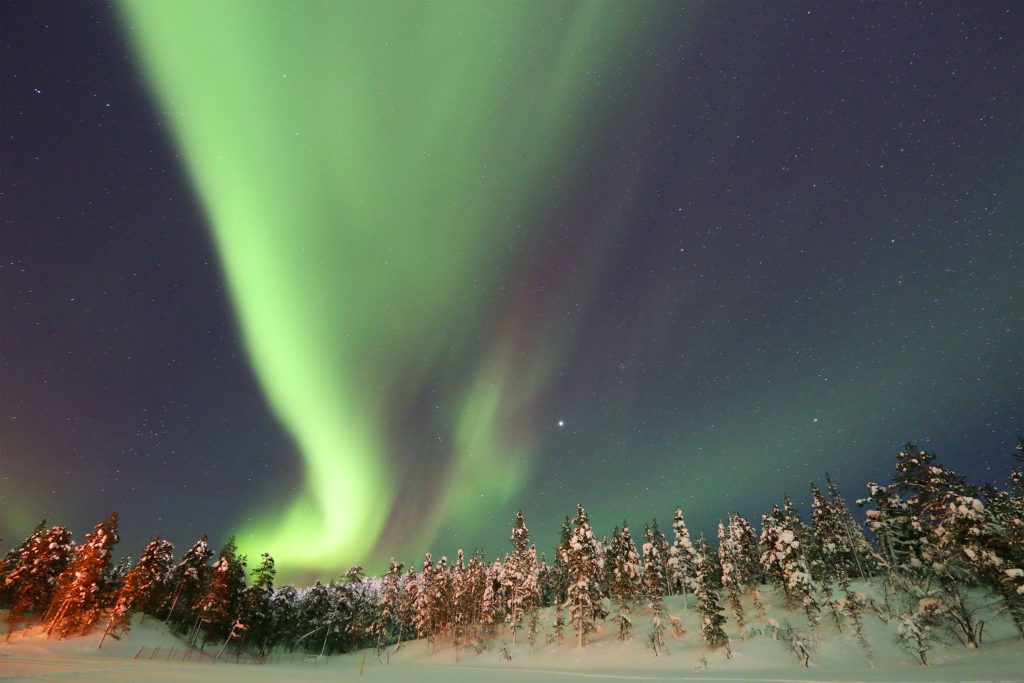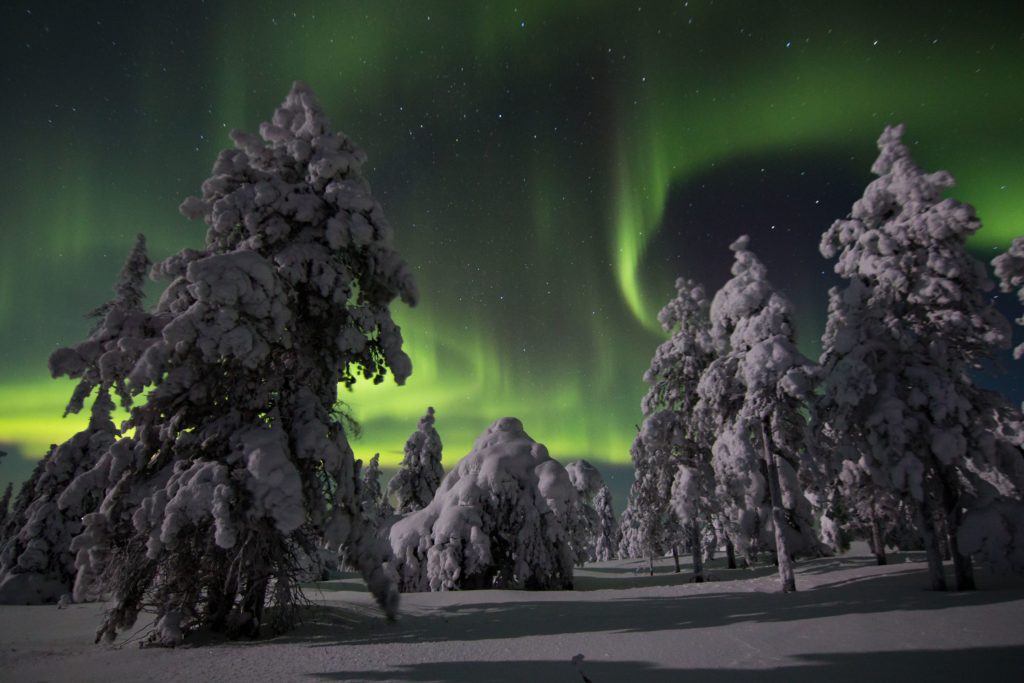What is the aurora borealis?
If you’re lucky enough to see the Northern Lights, chances are this hypnotic show will stay with you for a long time.
The aurora borealis is due to a very particular phenomenon: the deformation of the magnetic layer that surrounds the earth. The sun regularly releases matter; this phenomenon disrupts the earth’s protective layer called the magnetosphere. The solar particles thus released are carried away by the “solar wind”. The wind thus charged with solar particles collides with atoms in the upper atmosphere, between 80 and 1000 kilometres above our heads.
It is these atoms, exposed to the solar wind, that emit green light (most often) but also red, violet or pink light.
As such, the Northern Lights depend on the sun’s activity, and are therefore intrinsically linked to the weather.
By definition, this is therefore a phenomenon that is difficult to predict in advance, even though satellites are able to anticipate the aurora borealis a few hours before it occurs (by recording more intense solar wind activity).
Apps are designed to provide aurora hunters with a precise indication of the next arrival of the phenomenon. These apps are generally free of charge and provide accurate predictive visibility of the arrival of the aurora borealis up to seven days in advance.

Best times to see the aurora borealis
Although the Northern Lights are difficult to predict, some times are better than others.
It’s easier to admire the northern lights on a clear day and enjoy clear skies.
Between September 21 and March 21, the nights are longer and the chances of seeing the Northern Lights are increased. But you’re likely to see them already as early as August.
However, it is not recommended that you start chasing the Northern Lights after the third week of March. Indeed, night falls much later, until it disappears completely (the famous “midnight sun”). It will therefore be complicated to observe the phenomenon in good conditions.
Technically, the aurora borealis also occurs during the day, but is only visible at night.
It is recommended to look at the sky around 1 a.m., as aurora hunters agree that this is the best time.

Finnish Lapland, an ideal destination
Finnish Lapland, in particular, offers vast spaces as far as the eye can see, which are particularly suitable for admiring the phenomenon. You will witness the reflection of the Northern Lights in the icy lakes, a truly spectacular show.
The Ivalo region, close to the wonderful Urho Kekkonen National Park, is particularly renowned for the beauty of its Northern Lights.
Remember to plan a trip in the area. Nature lovers and amateurs of vast expanses will be delighted; the region is incredibly exotic; as for canoe and kayak enthusiasts, they will be able to practice their passion along the Ivalojoki River.
Have a good trip!









